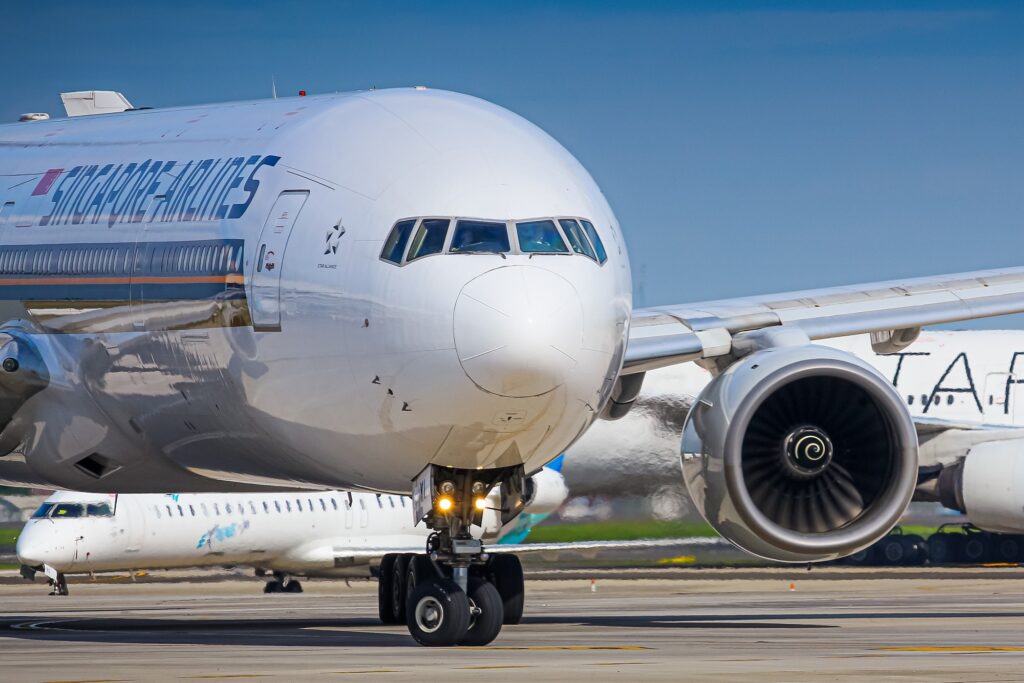On May 15, 2025, Singapore Airlines Group (SIA) posted its highest-ever annual profit figures in the company’s 53 years under its current name. The Singapore-Changi Airport (SIN) based carrier airline group recorded a net profit of US$2.78 billion, representing an increase of3.9% higher over the previous year. This is despite the airline recording an increase in overall competition on key routes and decreasing yields as a result.
The significant rise in net profits for the financial year 2024/25 (FY2024/25) was boosted substantially through the provision of a one-time non-cash accounting benefit from the Air India-Vistara merger, said the carrier.
Overall, the SIA Group (Which includes Singapore Airlines, Singapore Airlines Cargo, and Scoot), saw revenues increase by 2.8% year-on-year to US$19.54 billion, which according to the airline was driven by record passenger volumes and strong demand in both passenger and cargo markets. SIA and its budget sister airline Soot transported 39.4 million passengers, representing an increase of 8.1% over FY2023/24.
While net profits rose, however, passenger yields fell by 5.5% to 10.3 cents per revenue passenger-kilometer (RPK). This was largely due to the carrier’s overall network capacity growth surpassing forecast recovery in the market, with competition from local and international rivals driving fares down overall. Generated passenger revenue accounted for US$15.85 billion, showing just a slight rise of 1% over the previous year.
The SIA Group’s passenger load factor declined overall by 1.4% in FY2024/25, with the final figure for the year being recorded at 86.6%. While network capacity grew by 8.2% over the SIA operation, passenger numbers increased at a slower rate, at just 6.4 percentage points.
Group spending rose 9.5% to US$17.83 billion in FY2024/25, with non-fuel expenditures rising 11% due to capacity growth and inflationary pressures. Despite efforts taken by the company in terms of added cost control measures, as well as the introduction of more digitalized procedures, the increase in overall trading costs saw a drop in operating profits of US$1.71 billion, representing a 37.3% fall. The group also saw net fuel costs rise, primarily due to volume lift and fewer gains being achieved in its fuel hedging strategies.
On the positive side. One of the SIA group’s biggest contributions to its success for FY2024/25 was an accounting gain of US$1.1 billion arising from the November 2024 consolidation of Air India with Indian rival carrier, Vistara. As part of the finalization of the agreement for the two airlines to merge, SIA bought 25.1% of the newly enlarged Air India, which, according to an SIA statement, “serves its multi-hub growth strategy and gains exposure to the rapidly expanding aviation space in India.”
The second half of FY2024/25 recorded net profit rising 65% to US$2.04 billion, with revenue hitting US$10.04 billion, a half-yearly high. This performance was driven by strong seasonal travel demand and one-off merger-related benefits.
On the cargo side
Cargo revenue from SIA Group operations rose by 4.4%, which, according to the airline, was fueled by increased demand for perishable goods and e-commerce, in addition to the impacts from challenges in sea freight logistics, particularly those surrounding issues in the Red Sea and the Suez Canal at the end of 2024.
Additionally, the SIA Group’s cargo load factor improved by 1.6% year-on-year, rising to 56.1%, while yields fell 7.8% due to an increased competitive environment in the air cargo industry in FY2024/25 and downward pressure on freight rates. However, SIA’s cargo business (which includes belly-hold cargo as well as on Singapore Airlines’ fleet of dedicated freighter aircraft) was “aided by network flexibility and the capacity to reroute capacity into high-demand trade lanes,” stated the company.
Looking ahead
SIA Group ended FY2024/25 with a fleet of 205 aircraft, with an overall average age of 7 years and 8 months. This breaks down as 136 for Singapore Airlines, 57 for Scoot, and 12 for Singapore Airlines Cargo. The parent company currently flies on 112 routes serving 83 destinations across 35 countries, while the ISA Group as a whole serves a global network covering 128 destinations. The Group ended FY2024/25 with US$8.3 billion in cash and bank balances, backed by US$3.3 billion of undrawn credit lines.
Shareholder equity was US$15.7 billion after accounting for bond redemptions and dividend payments. The board recommended a final dividend of 30 Singapore cents a share, bringing the total payout for the year to 40 cents a share, or US$1.2 billion.
The SIA Group ended its statement regarding its FY2024/25 figures by commenting on its prospects for the current year, stating that “As long as macroeconomic uncertainty and geopolitical tensions prevail, SIA anticipates sustained growth through its dual-brand strategy, strategic partnerships, and investments in fleet, lounges, and generative AI technologies. Scheduled capacity increases on critical routes, digital transformation efforts, and infrastructure upgrades, such as lounge refurbishments and new premium cabin products, will put the group in a competitive position.” “Through disciplined cost management and an Asia-Pacific anchored diversified network, SIA is well-positioned to capture future demand while protecting profitability,” the statement ended.




